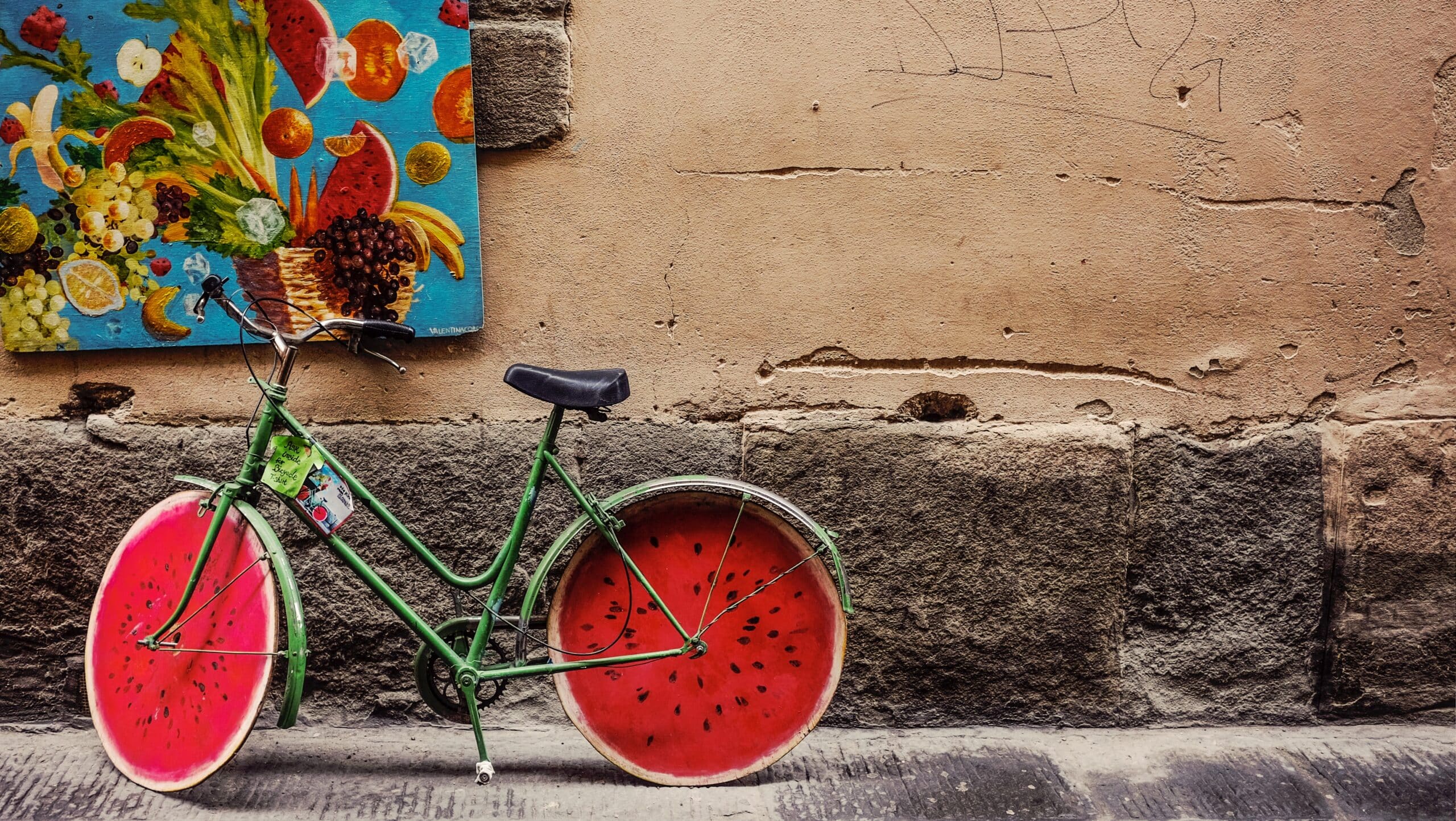Have you ever had a craving for something sweet on a hot summer day? You know the feeling – when your mouth starts to water at the thought of biting into a juicy slice of watermelon. You’re not alone! Watermelons are an incredibly popular fruit, and growing your own can be a rewarding experience. But if you don’t have any experience with gardening, it can seem like an intimidating process.
Fortunately, growing and caring for watermelons doesn’t have to be complicated. With some knowledge and the right soil and supplies, anyone can become a successful watermelon grower – regardless of their gardening background. In this guide, we will provide you with all of the information that you need to get started growing your own delicious melons in no time!
Whether you’re new to gardening or just looking for a way to add some sweetness to your life, you’ll find all the tips and tricks that you need in this guide on how to grow and care for watermelons. We’ll discuss everything from selecting seeds and finding the right spot in your yard to watering schedules and harvesting your crop. Plus, we’ll even share some delicious recipes so that you can enjoy your hard work once they’re ready! So let’s get started – it’s time to learn how to grow delicious sweet watermelons!
Selecting A Variety Of Watermelon
Did you know that watermelons are the most popular of all melons in the United States? This juicy, sweet fruit is enjoyed by many, but what’s less known is how to grow them. Growing your own watermelon can be a rewarding experience if done correctly. In this article, we’ll cover selecting a variety of watermelon and deciding where to plant it.
When selecting the type of watermelon you want to grow, it’s important to consider what size and taste you prefer. Do you want a large one for making pies or small ones for snacking? Are you looking for an heirloom variety with a unique flavor or something more common? There are many varieties available, so be sure to research which type best suits your needs.
It’s also important to think about when you’d like your watermelons to ripen. Some types will ripen earlier than others, so make sure that your variety will have enough time to mature before season’s end. If possible, buy quality seed from a local nursery or garden center; this will ensure that you get good germination rates and quality fruit.
Now that you’ve selected the type of watermelon you’d like to grow, it’s time to choose where it will be planted. Consider whether your garden has enough space for large vines and if there is enough sunlight available for optimum growth. Make sure the soil is well-draining and add some compost or manure if needed for better nutrition. Once these factors have been taken into account, you can begin planting your seeds!
Deciding Where To Plant Watermelons
Planting watermelons is like embarking on an exciting journey of discovery. You get to watch as your hard work and dedication brings forth a juicy, vibrant reward that’s worth every effort. Deciding where to plant them is the next step in this adventure.
Choosing the right spot for your watermelon patch requires some consideration. Your plants need plenty of space and direct sunlight for healthy growth, so be sure to select an area with ample open land and at least 8 hours of direct sunlight every day. It’s also important to consider the quality of the soil: it should be relatively loose, well-drained and rich in organic material such as compost or manure.
Finally, think about how easy it will be to care for your future crop: make sure you have adequate access to water sources such as a hose or rain barrel, and that you can easily weed the area without having to bend over too much or strain yourself. If you keep all these points in mind when selecting a location, you’ll soon have an ideal spot for growing delicious watermelons! Onwards we go to preparing the soil…
Preparing The Soil For Planting
As counterintuitive as it may seem, preparing the soil is the crucial first step in growing watermelons. It’s ironic that the very thing you thought was just a matter of planting and harvesting is actually much more involved! After all, properly preparing the soil provides your watermelons with the foundation they need to thrive.
So what should you do? To begin, it’s important to test your soil’s acidity. If it’s too acidic or too alkaline, then you’ll need to add nutrients to balance out the pH level. Additionally, you should ensure that your soil is well-draining – if not, then consider adding organic matter like compost or peat moss.
Finally, make sure that your soil is well fertilized – this helps give your watermelons’ roots plenty of nutrition for growth. Adding organic fertilizer will help keep their development on track and provide them with essential elements like nitrogen and phosphorous for optimal health. With these steps in place, there’s no doubt that you’ll be able to enjoy delicious watermelons in no time!
Planting Watermelons
A successful watermelon harvest starts with the right planting. Is it true that proper sowing techniques can increase or even guarantee a bountiful yield? The answer is yes. When done correctly, planting watermelons can give growers an abundance of delicious, juicy fruit.
The best time to plant watermelons is when the soil temperature has reached at least 70 degrees F (21 C). Additionally, many gardeners will wait until all danger of frost has passed. To ensure maximum growth potential and get the most out of their crop, growers should make sure they’re planting in a spot that gets plenty of sunlight and has good drainage and rich soil.
Once the ideal conditions are met and the soil is ready, it’s time to plant! Seeds should be planted about 1 inch deep in hills or mounds spaced 4-6 feet apart from one another. It’s also important to thin out seedlings as needed for adequate space between plants. Following these steps will help ensure healthy plants that produce a large yield come harvest-time.
Watering Watermelons
Coincidentally, we have already come to the fifth step in growing and caring for watermelons: watering. Just as with any other plant, the key to a healthy watermelon crop is proper irrigation. But how much water should be given?
The answer depends on a few factors. First, take into account the amount of rain your area receives throughout the growing season. If your area gets enough rain, you may not need to do additional watering. On the other hand, if it’s been hot and dry, you’ll want to pay closer attention to your plants’ needs. Second, consider the size of your watermelon patch and how quickly moisture is lost from the soil due to sun and wind exposure. If you have a larger patch or are growing in an exposed location, more frequent watering will be necessary.
Finally, make sure that when you do water your plants, you give them plenty of time for their roots to absorb the moisture. A good rule of thumb is that each plant needs about 1 inch (2 centimeters) of water per week—however this can vary depending on conditions such as heat and humidity levels during this period of growth. So if possible use a rain gauge or other device to measure how much water your plants are getting each week and adjust accordingly!
Fertilizing Watermelons
Fertilizing watermelons is truly a magical experience! You have the incredible opportunity to transform a simple plot of land into an oasis of juicy, sweet watermelons. But it’s not as easy as it sounds – you’ll need to know the ins and outs of proper fertilization in order to get the most out of your crop.
First and foremost, you want to make sure that you’re using a fertilizer specifically designed for watermelon plants. This will give your plants just the boost they need to grow healthy and strong. When applying the fertilizer, be sure to spread it evenly around the base of each plant and incorporate it into the soil. Don’t forget that you can also use mulch or compost to supplement fertilizer use – both are incredibly effective ways to ensure plenty of nutrition for your plants.
Finally, be mindful of how much fertilizer you’re using – too much can lead to nutrient burn in your crops which can impede growth or even cause death! Stick with recommended amounts for best results and monitor your crops frequently throughout the growing season for signs of over-fertilization. With these tips in mind, you’ll be well on your way towards a bumper crop of delicious watermelons!
Controlling weeds in the watermelon patch is essential for ensuring successful growth. Without adequate weed control, competing weeds can steal vital nutrients from your watermelon plants and inhibit their growth. Luckily, there are many different techniques available for keeping weeds at bay – from manual weeding to chemical herbicides – so don’t hesitate to explore all options before making a final decision!
Controlling Weeds In The Watermelon Patch
Weeds are a pesky problem in any garden, and the watermelon patch is no exception. Controlling weeds can be a labor-intensive task, but it’s necessary to keep your patch healthy and productive. Let’s explore four key strategies for controlling those pesky weeds:
- Mulching – Using mulch around your plants can help reduce the amount of weeding you have to do by keeping sunlight from reaching weed seeds.
- Hand-weeding – If you don’t have access to mulch, hand-weeding is the next best option. It’s important to remove all parts of the weed so that it doesn’t re-grow.
- Site preparation – Before planting, till or turn over the soil thoroughly to reduce the number of weed seeds present in the soil.
- Cover crops – Planting cover crops between rows of watermelons helps keep weeds away while providing benefits such as improving soil health and regulating soil temperature.
These simple steps can go a long way in preventing weeds from taking over your watermelon patch! But even with diligent control measures, some weeds may still manage to creep in – so it’s important to stay vigilant against them with regular inspection and removal when needed. With these strategies in place, you’ll be well on your way towards growing a healthy crop of watermelons – free from annoying weeds!
Controlling Pests And Diseases
Controlling pests and diseases is a key part of growing healthy watermelons. Without proper care, infestations and infections can spread quickly and cause irreparable damage to your crop. For this reason, it’s important to be vigilant about monitoring for signs of trouble and taking proactive steps to protect your plants.
There are a few strategies you can employ to limit the risks posed by pests and disease. First, make sure that you’re planting in an area with plenty of sun exposure and well-draining soil. This will help keep the environment hospitable for healthy growth and reduce the chances of attracting unwanted visitors. You’ll also want to regularly check for signs of insect activity or fungal growth, as these can both lead to issues down the line if left unchecked. Additionally, you may want to consider using some organic sprays or other treatments that are designed to ward off pests and diseases without using harsh chemical solutions.
By following these simple guidelines, you’ll give your watermelons the best chance at success while minimizing any potential damage caused by pests or disease. Taking steps like these will help ensure that your harvest is plentiful come harvest time! As you move forward with caring for your melon patch, it’s time now to turn your attention towards harvesting those delicious fruits!
Harvesting Watermelons
Ah, the sweet taste of a juicy watermelon! Reaching the pinnacle of summer’s bounty is easier than you think. With just a few simple steps and some patience, you can enjoy a fresh watermelon from your own backyard. Here are nine tips for harvesting watermelons:
- Determine when to harvest – Most watermelon varieties are ready for harvest in 75-90 days after planting.
- Look for signs of ripeness – Check the underside of the melon and look for a creamy yellow spot, which indicates ripeness.
- Cut rather than pull – Gently cut the stem with pruning shears or a sharp knife, leaving an inch or two of stem attached to the melon.
- Store carefully – Once harvested, handle watermelons with care. Avoid bruising them by stacking them gently and not piling them too high.
Harvesting your own watermelons can be an incredibly rewarding experience, especially if you’ve taken the time to nurture your crop throughout the season. If you’re lucky enough to have access to plenty of sunshine and heat, your efforts will be amply rewarded! Plus, it’s easy to tell when a melon is ripe; simply check the underside of each one for that telltale creamy yellow spot—a sure sign that it’s time to reap what you’ve sown!
Now that you’ve successfully harvested your delicious watermelons, it’s time to store them properly in order to ensure they stay fresh as long as possible. To do this…
Storing Watermelons
Did you know that watermelons are the most popular type of melon in the U.S.? It’s true! Americans consume an astonishing 9 pounds of watermelon per person every year. Now that you’ve harvested your own watermelons, you’ll want to make sure they’re properly stored so they stay fresh and delicious.
Storing watermelons is simple. First, choose watermelons with a healthy stem still attached. Place them in a cool, dry area away from direct sunlight for up to four weeks or until you’re ready to eat them. If it’s too warm, the fruit can spoil quickly so aim for temperatures between 50 and 60 degrees Fahrenheit. You can even store your watermelons in the refrigerator if necessary to keep them at their peak flavor and texture for longer periods of time.
If you plan on storing your watermelon for more than a few days, make sure to wrap it tightly in plastic wrap or foil before putting it in the fridge or other cool storage area. This will help protect against any moisture loss and prevent mold from forming on the exterior of the fruit. Plus, wrapping up your melon will also help protect its flavor and keep it sweet!
It’s important to take proper precautions when storing watermelons as they are susceptible to mold and rot if not handled correctly. With just a few simple steps, however, you’ll ensure your melon stays fresh enough to be enjoyed over multiple meals! Now let’s move on to controlling insects with beneficial nematodes.
Controlling Insects With Beneficial Nematodes
Controlling insect pests can be a tricky task for any gardener, but with beneficial nematodes, it doesn’t have to be. Picture this—tiny microscopic worms that act like tiny soldiers in your garden, tirelessly working around the clock to protect your watermelon crop from damage. That’s what beneficial nematodes are all about! These amazing organisms provide an eco-friendly solution for controlling harmful insects in your garden without having to resort to chemical pesticides.
Beneficial nematodes work by entering the bodies of insect larvae and releasing bacteria into their systems. This bacteria is harmless to plants and people, but deadly to many types of insect larvae. Once they’ve been infected, the larvae die quickly and the nematodes move on in search of more insect prey. It only takes a few days before the cycle is complete and you’ve got an army of tiny defenders protecting your watermelon crop!
This type of pest control is easy to apply and can be done with minimal effort. All you need to do is mix a solution of beneficial nematode powder with water and spray it directly onto the soil surface around your watermelons. The nematodes will then enter the soil, seek out insects, infect them, and eliminate them from your garden. With this eco-friendly solution in place, your watermelon crop will be safe from pesky bugs all season long!
With that said, controlling insects isn’t all you’ll need to do when it comes to growing healthy watermelons. Knowing how much sun and water they need, as well as how often they should be fertilized are essential steps for successful growth too. Read on for some helpful tips on how best to care for these delicious fruits!
Watermelon Growing Tips
Growing watermelons can be a rewarding experience, but it’s important to have the right tips and tricks. In this section, we’ll discuss some of the key elements of growing watermelons.
First, you’ll need to choose the right spot in your garden for your watermelon plants. Look for a spot that gets full sun coverage and has good drainage. The soil should also be deep and well-draining, with plenty of organic matter mixed in. Additionally, make sure that you have a trellis or support system ready for when the vines start to grow.
Once you’ve chosen your spot, it’s time to plant! Plant your seeds about an inch deep in well-draining soil that is at least 70 degrees Fahrenheit. Water them generously after planting, and then keep the soil moist but not soggy until germination occurs. As your plants begin to grow, keep an eye out for any pests or diseases that may be affecting them and take appropriate action if necessary. With proper care, you should be able to harvest a delicious crop of watermelons in no time!
By following these tips, you should have no problem getting started in growing watermelons. Now let’s take a look at some troubleshooting advice if problems arise along the way.
Troubleshooting Watermelon Growing Problems
Growers of watermelon have undoubtedly had their fair share of tribulations, from dealing with pests to picking the right soil. Thus, troubleshooting watermelon growing problems is essential for anyone wanting to reap a delicious harvest. Like a puzzle, getting all the pieces in place yields a beautiful result.
With this in mind, being able to identify and address any issues that arise is paramount. Common problems include disease, pests, or uneven pollination caused by inconsistent weather or improper pollination techniques. To combat these issues, it’s important to understand what causes them and how they can be rectified.
Fortunately, there are many resources available to help guide growers through any problems they may encounter. Having a good understanding of when and how to apply corrective measures will help growers overcome any obstacles that may arise during their journey towards harvesting luscious watermelons. With patience and perseverance, success is sure to follow!
Companion Planting For Watermelon
The stifling heat of summer brings with it the sweet aroma of freshly ripened watermelon, its vivid green rind an indication of the sweet, juicy goodness waiting just beneath. With some careful planning and attention to detail, you can easily grow your own watermelons in your garden or backyard!
In this section we’ll be discussing companion planting for watermelon. Companion planting is when two different species of plants are planted close together and work together to benefit each other’s growth and health. This method has been used for centuries by farmers to improve soil fertility and crop yields. By planting certain types of flowers, herbs, and vegetables near your watermelon vines, you can create a more diverse ecosystem that will help produce healthier fruit.
Some great companion plants for watermelon include squash, beans, corn, marigolds, nasturtiums, oregano, radishes and sunflowers. Not only do these plants offer beneficial nutrients for your soil but also act as natural pest deterrents which help protect your melons from damaging insects such as aphids and beetles. Planting these companions near your melon patch will also provide extra shade which helps keep your melons cool during hot summer days – a must-have if you want them to reach their full sweetness potential!
With the right selection of companion plants in place near your melon patch, you’ll be well on your way towards growing big juicy fruits all season long! Next up we’ll look at selecting watermelon varieties that are best suited for small spaces.
Watermelon Varieties For Small Spaces
If you’re short on space but still want to grow watermelons, don’t worry. There are plenty of varieties that don’t require a lot of real estate. While some of the larger watermelon varieties can take up quite a bit of space, there are several smaller ones that can fit nicely in a small garden or even a container garden.
These smaller varieties include the Sugar Baby, Yellow Doll, and New Look watermelons. All three are round and weigh between five and fifteen pounds when fully matured. The Sugar Baby has green skin with light stripes and is known for its sweet and juicy flesh. The Yellow Doll is yellowish-green with yellow stripes and has very sweet flesh as well. Finally, the New Look variety is striped like the Sugar Baby but usually produces slightly larger melons than the other two varieties.
No matter which variety you choose, it’s important to give your plants enough room to spread out their vines without overcrowding them. This will help maximize their potential for producing delicious fruit! With proper care and attention you’ll be able to enjoy your own homegrown watermelons in no time.
Frequently Asked Questions
How Many Watermelons Will One Plant Produce?
Let’s face it, who doesn’t love watermelon? Its sweet, juicy flavor is unmatched and its iconic summertime presence brings joy to many. But have you ever stopped to consider just how many watermelons one plant can produce? Well, prepare to be shocked!
Turns out, the answer is a lot more than you’d think. With the right conditions, one watermelon plant can yield up to two dozen melons – enough to make everyone in your household smile from ear-to-ear. In order for your plants to hit their peak production potential however, there are a few things that need to be taken into consideration.
Firstly, if you want your watermelons to truly reach their maximum yields then they’ll need plenty of sun and nourishing soil. Additionally, taking the time to prune your plants every now and then will help them stay healthy and well-maintained which will ensure a bountiful harvest come summertime. And lastly, don’t forget about watering! Keeping your soil consistently moist is essential for allowing the melons to grow properly and reach their full size.
So what are you waiting for? Get growing! With the proper care and maintenance, you’ll soon find yourself with an abundance of succulent watermelons ready for snacking on all summer long.
Can Watermelon Be Grown In Containers?
Growing watermelon in containers can be a great way to enjoy the juicy fruit without a lot of space. Did you know that one watermelon plant can produce up to sixteen melons? That’s a lot of sweet, delicious melon for your garden. So, let’s explore how you can make it happen.
You’ll need a large container with plenty of drainage holes and enough room for the roots to spread out. A 5-gallon container should work well, but if you have more room then use it! Fill the container with potting soil and compost and add some slow-release fertilizer to provide your plants with adequate nutrition. Plant two or three seeds about an inch deep into the soil, leaving at least 6 inches between each seedling.
Watermelons need lots of sunshine and warm temperatures to thrive, so make sure your container is in a sunny spot with temperatures above 72 degrees Fahrenheit during the day. Depending on where you live, you may need to bring in your container during cold nights or move it indoors if there’s too much rain. Keep the soil moist but not soggy, especially when fruits start forming on the vine – this will ensure sweeter and juicier results!
It is possible to grow healthy watermelon plants in containers with these simple tips. With adequate sunlight, warmth and nutrition, your plants will soon produce delicious fruits that are perfect for snacking or making summertime treats!
What Is The Best Time Of Year To Plant Watermelon?
The best time of year to plant watermelon is a question that many gardeners have. After all, there’s nothing like biting into a crisp and juicy slice of perfectly ripe watermelon on a hot summer day. To ensure delicious watermelons, it’s important to plant them at the right time of year for the optimal growth and yield.
Planting watermelons in springtime is ideal for those who live in warmer climates. Gardeners should wait until the soil temperature has risen above 65 degrees Fahrenheit and all danger of frost is gone. Planting too early can stunt the growth of your plants as cold temperatures can damage their delicate roots.
In colder regions, it’s best to wait until late spring or early summer to start planting your watermelon seeds or seedlings. To make sure you get the most out of your crop, consider using season-extending techniques such as row covers and cold frames to give your plants an extra boost and protect them from unexpected cold snaps or frosts. Before you know it, you’ll be enjoying sweet slices of juicy watermelon!
With careful planning, gardening knowledge, and some patience, you can grow delicious watermelons that will be sure to delight family and friends alike! So don’t forget: when it comes to growing watermelons, timing is everything.
How Long Does It Take For A Watermelon To Mature?
It’s summertime and many of us are dreaming of a juicy, sweet watermelon. But how long does it take for one to mature? For those looking to start their own garden, this is an important question to consider.
Alluding to the joys of summer, growing watermelons requires patience—but the wait can be worth it. Watermelon plants take around 90–120 days to reach maturity after planting in late spring or early summer. The key is consistently warm temperatures, so they need plenty of sunshine and warm soil in order to grow best.
Watermelons also need plenty of water and tend to do best with around one inch per week. This can be difficult in areas with very hot summers, so you may have to get creative with irrigation! Try using mulch or shade cloths during the hottest parts of the day if possible. With a little bit of effort and some luck, you could soon have a delicious harvest of homegrown watermelons!
How Can I Tell When A Watermelon Is Ripe?
Growing watermelons is a summertime treat! But how do you tell when they’re ripe and ready to pick? It can be quite tricky, that’s for sure. Hyperbole: it feels like an eternity waiting for those sweet fruits to mature!
The trick is in the color. A watermelon will usually start off with a light or dark green rind, depending on the variety. As it gets closer to ripeness, the rind will turn a yellowish-white color. Another indicator of ripeness is if the tendril closest to the melon has dried up and turned brown—this tells you it’s time to harvest!
Finally, give the watermelon a thump. Ripe melons will have a deep hollow sound, while those still needing more time should sound more solid and dull. And there you have it—all the tips you need to know when trying to identify a ripe watermelon! With these tools in your arsenal, you’ll be well on your way to harvesting delicious fruit every summer.
Conclusion
The watermelon is a wonderful fruit that can be enjoyed in so many ways. With the right care and attention, growing watermelons can be incredibly rewarding and provide you with an abundance of delicious fruits that will last for weeks. Whether you choose to grow your watermelons in the ground or in containers, you’ll find it to be a fun and enjoyable experience.
By following the tips included in this guide, you’ll be able to successfully cultivate these sweet and juicy fruits from start to finish. From knowing when the best time of year is to plant your watermelon seedlings, to being able to identify when a melon is ripe for harvesting – the whole process can be an absolute breeze!
Overall, growing and caring for watermelons is surprisingly simple. With just a bit of effort, your garden space could soon be bursting with enough succulent watermelons to feed an army! So why not give it a try? You’ll never know just how satisfying it can feel until you do – it’s truly an experience like no other!





























